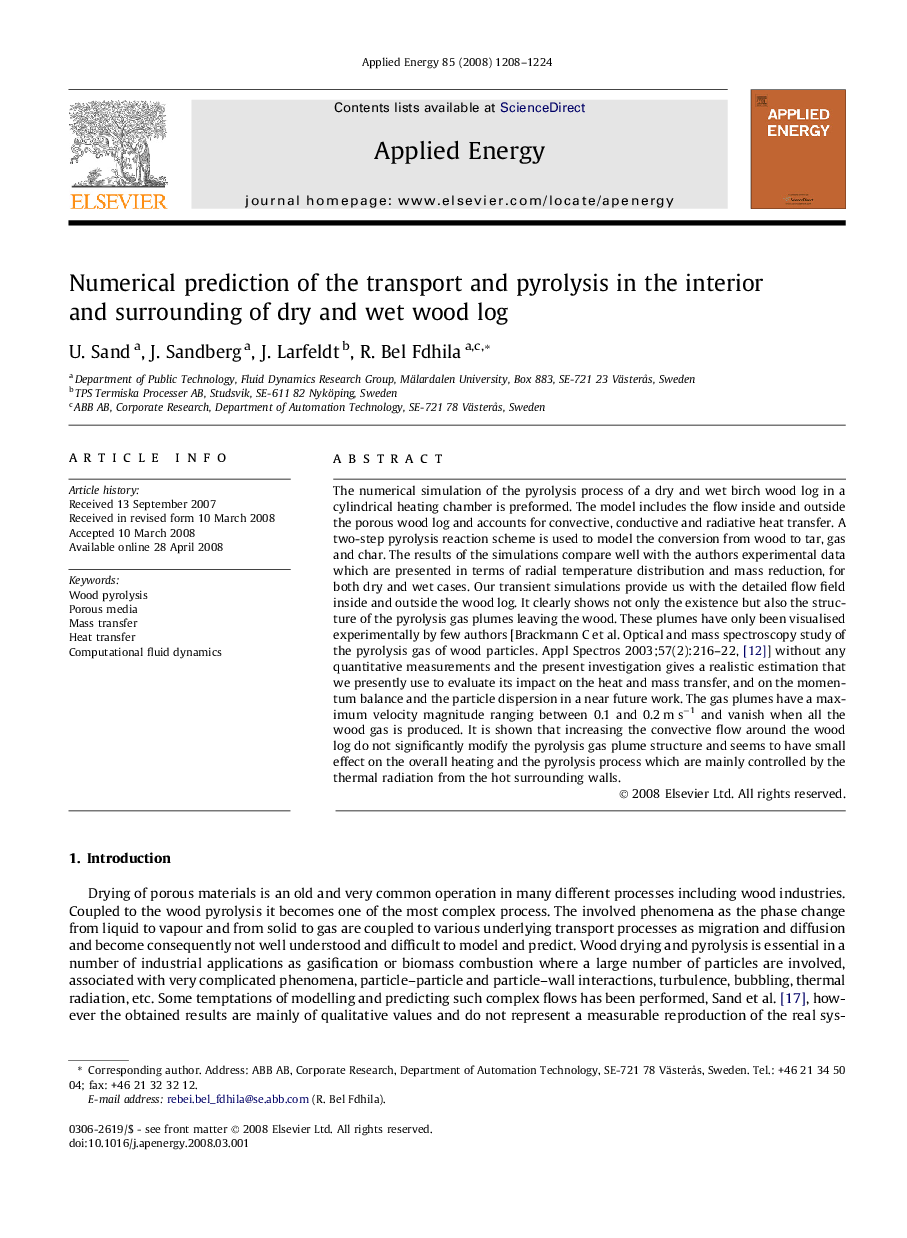| Article ID | Journal | Published Year | Pages | File Type |
|---|---|---|---|---|
| 245140 | Applied Energy | 2008 | 17 Pages |
The numerical simulation of the pyrolysis process of a dry and wet birch wood log in a cylindrical heating chamber is preformed. The model includes the flow inside and outside the porous wood log and accounts for convective, conductive and radiative heat transfer. A two-step pyrolysis reaction scheme is used to model the conversion from wood to tar, gas and char. The results of the simulations compare well with the authors experimental data which are presented in terms of radial temperature distribution and mass reduction, for both dry and wet cases. Our transient simulations provide us with the detailed flow field inside and outside the wood log. It clearly shows not only the existence but also the structure of the pyrolysis gas plumes leaving the wood. These plumes have only been visualised experimentally by few authors [Brackmann C et al. Optical and mass spectroscopy study of the pyrolysis gas of wood particles. Appl Spectros 2003;57(2):216–22, [12]] without any quantitative measurements and the present investigation gives a realistic estimation that we presently use to evaluate its impact on the heat and mass transfer, and on the momentum balance and the particle dispersion in a near future work. The gas plumes have a maximum velocity magnitude ranging between 0.1 and 0.2 m s−1 and vanish when all the wood gas is produced. It is shown that increasing the convective flow around the wood log do not significantly modify the pyrolysis gas plume structure and seems to have small effect on the overall heating and the pyrolysis process which are mainly controlled by the thermal radiation from the hot surrounding walls.
